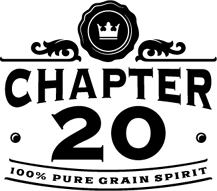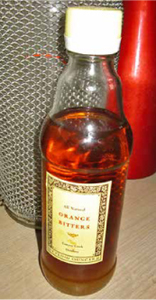
What the heck are bitters? And why should you even think about making your own? If you’re a connoisseur of classic cocktails, you’re no doubt aware that, in the last few years, bitters are showing up all over the cocktail scene. Bartenders and mixologists are more and more frequently concocting their own unique bitters, often inspired by local ingredients.
Prior to Prohibition, bitters were considered an essential ingredient in many popular cocktails; often just a drop or two was the difference between an average drink and something more like ambrosia. But what exactly are bitters, and why are they so important to so many cocktails?
Long before bitters gained fame as an essential cocktail ingredient, they were concocted and consumed under many different names as patent medicines. Prior to the introduction of pharmaceuticals around the mid-1800s, homemakers and doctors relied heavily on herbal-based remedies. At that time, there were literally hundreds of these patent medicines on the market, like Dr. Hostetter’s Stomach Bitters. Usually these remedies had an alcohol base; this was because many herbs were quite perishable as well as available only seasonally, and the alcohol served the practical purpose of preserving the fragile herbs.
To be clear, many bitters formulas were developed by physicians, and were marketed as digestifs, or stomach settlers. Other formulas were reputed (or at least claimed) to be effective cures for overindulgence (read: hangovers), headaches, stomach cramps and other digestive complaints. Formulas contained combinations of spices, herbs, tree bark, seeds, citrus fruit peels and other “botanicals,” all infused in some sort of high-proof alcoholic spirit. Some of the best-known herbal liqueurs like Sambuca and Chartreuse have recipes based on bitters formulas.
The famous Angostura bitters, partly famous for its fanatically guarded secret formula, was developed by a German doctor, Johann Siegert. When he arrived in Venezuela in 1820, he was appointed surgeon general to Simon Bolivar’s army, which was based in the town of Angostura. His knowledge of herbal remedies led him to create various tonics to help stimulate the soldiers’ appetites and treat digestive complaints. His bitters later gained a loyal following among sailors in the Caribbean, who claimed it was a cure for seasickness.
Even during Prohibition, “new” bitters appeared on the market, labeled as somewhat tongue-in-cheek medicines, although they were often simply a clever legal way of serving a thirsty clientele. Indeed, even today bitters are considered a food additive and not a beverage, so they can be found on grocery store shelves and bought by anyone.

My first attempt at homemade orange bitters. The color is completely natural, derived from fresh and dried orange peel.
You might be wondering why bitters are so important in so many cocktail recipes. Besides adding a subtle layer of additional flavor, bitters, properly used, help balance out the sweetness of other ingredients, such as simple syrup or liqueur. David will absolutely, positively never make a Cuba Libre (see recipe on page 167) without using bitters; all that Coca-Cola would be too sweet even for his taste. (We almost never drink soda other than using it as a mixer.)
When I picked up a copy of Brad Parsons’ book Bitters (see Books in Appendix A), I had only just started to collect some of the herbs and spices I wanted for making gin. I didn’t know I would want to make bitters when I bought the book; I was mostly just interested in learning more about them and how to use them. That changed when I realized I already had some of the ingredients in my growing apothecary of gin botanicals. That’s probably why I went for the orange bitters first; I only had to buy a few additional ingredients like, well, oranges.
A word of caution: This can become an absorbing, not to say addictive, hobby. Once you collect enough basic ingredients to make a couple kinds of bitters, and you’ve had a chance to try your handmade concoctions, I’ll bet you’ll want to start coming up with your own recipes. There are plenty of recipes for all kinds of bitters on the Internet. I recommend you pick up a copy of Bitters and start with those recipes, both for bitters and the cocktails to use them in. There are even ideas for using bitters in other ways in the kitchen, such as in salad dressings and glazes for meat.
Here is a recipe for orange bitters, which is based on the recipe in Bitters. I was amazed at the beautiful orange color it developed, all from the fresh peel. Look for the gentian root (don’t leave it out; it’s an important bittering ingredient) at your local natural foods store, or order from Starwest Botanicals (see Resources).
• Zest of 3 organic oranges, cut into thin strips
• ¼ cup (60 ml) dried organic orange peel
• 4 whole cloves
• 8 green cardamom pods, cracked
• ¼ teaspoon (1 ml) coriander seeds
• ½ teaspoon (2 ml) dried gentian root
• ¼ teaspoon (1 ml) whole allspice
• 2 cups (0.5 L) high-proof vodka (don’t skimp on cheap brands here)
• 1 cup (250 ml) water
• 2 tablespoons (30 ml) Rich Syrup (recipe below)
Put the orange zest, dried orange peel, spices and gentian root into a 1-quart Mason jar. Add the vodka, adding a bit more if needed to completely cover the ingredients. Put on the lid and store at room temperature for 2 weeks. Shake the jar gently once a day.
Strain the liquid, using cheesecloth or a coffee filter, into a clean 1-quart Mason jar. Repeat straining until all sediment is removed. Squeeze the cheesecloth to force through as much liquid as possible. Transfer the solids to a small saucepan. Cover the jar and set aside.
Pour the water over the solids in the saucepan and bring to a boil on medium heat. Cover the pan, reduce the heat to low and simmer for 10 minutes. Remove from heat and let cool completely.
Add the liquid and solids in the saucepan to another 1-quart Mason jar. Cover and store at room temperature for a week, shaking the jar every day. Strain the solids out, using cheesecloth, and discard the solids. Add the liquid to the jar with the original vodka mixture. Add the rich syrup, stir to mix well, then put the lid on and shake to blend and dissolve the syrup.
Store the jar at room temperature for 3 days. Then skim off anything that floats to the surface and strain it once more through cheesecloth. Use a funnel to bottle it, and you’re done! These bitters have the best flavor if used within a year, although they will last almost indefinitely.
Combine ½ cup (125 ml) sugar and ¼ cup (60 ml) water in a small saucepan. Bring to a boil, stir to dissolve sugar and remove from heat. Let cool before using.
For some classic cocktails using your handmade bitters, turn to chapter 22.